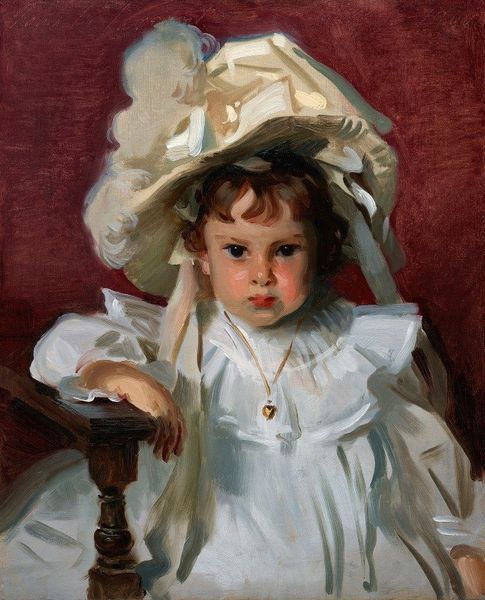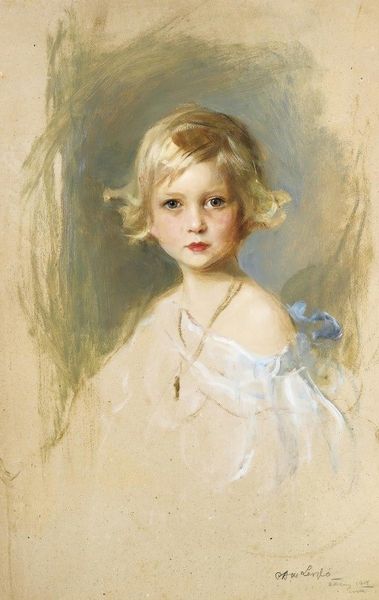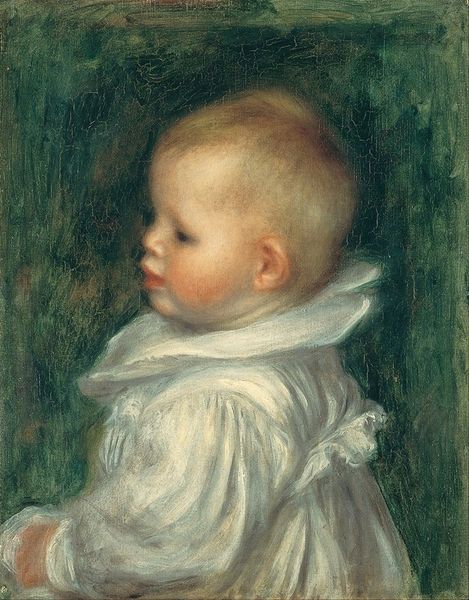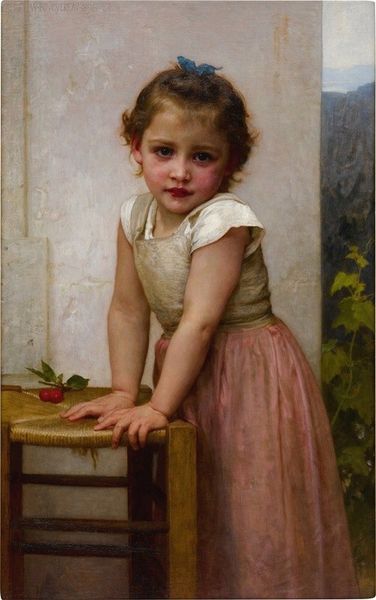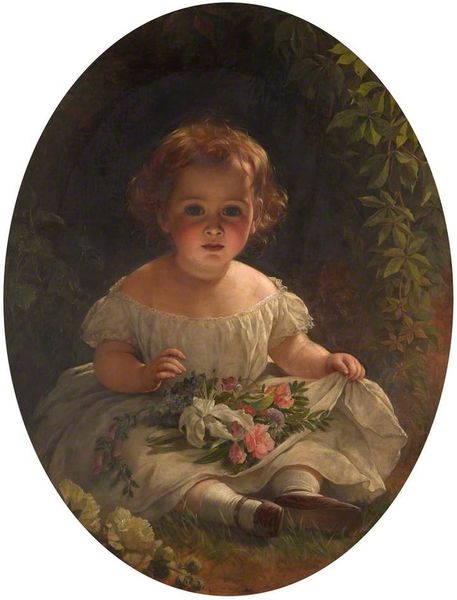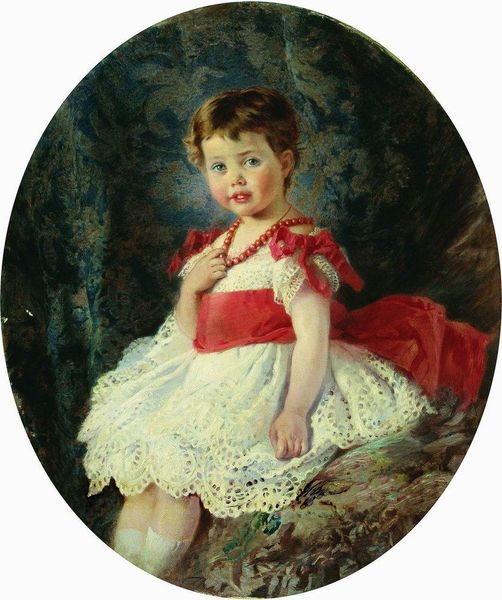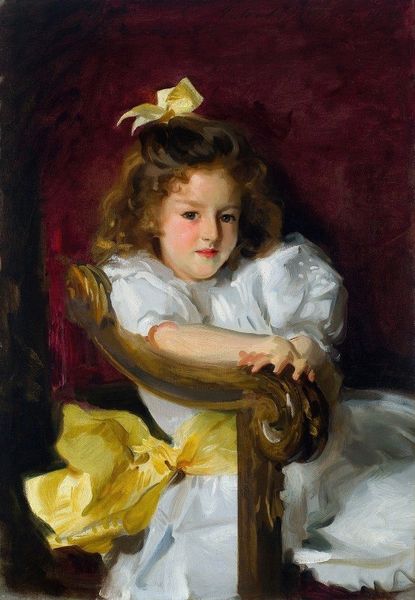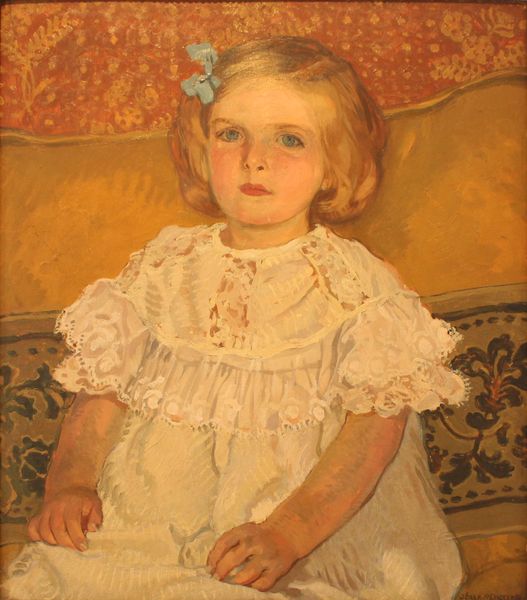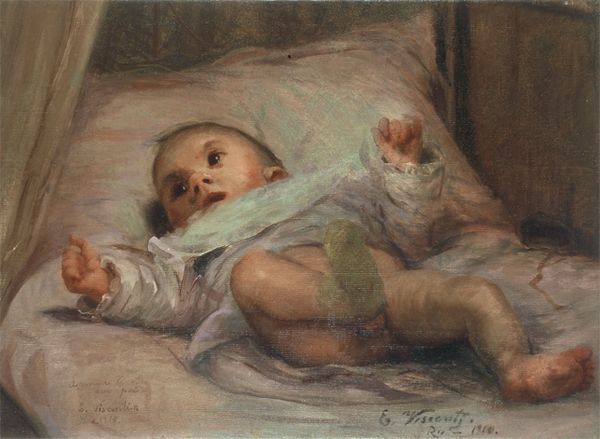
painting, oil-paint
#
portrait
#
figurative
#
painting
#
impressionism
#
oil-paint
#
figuration
#
oil painting
#
genre-painting
#
realism
Copyright: Public Domain: Artvee
Editor: This is James Jebusa Shannon's "Baby in a Ruffled Dress," painted in 1886, with oil on canvas. It feels very intimate, focusing on the delicate features of the child and all that fluffy, ruffled fabric. What are your thoughts about how the artist handled these materials? Curator: The materiality here speaks volumes. Shannon’s choice of oil paint, thickly applied, reveals an interest in capturing not just the baby’s likeness but the textures of the clothing. Notice the stark whiteness, symbolic of purity, yet consider its production: where did the cotton come from, who wove the fabric, and under what conditions was this elaborate dress made? These factors inevitably underpin the portrait, reminding us that even seemingly innocent images have complex material origins tied to a broader social fabric. Editor: That's a very interesting way of thinking about it. I hadn't considered the social aspects behind such a seemingly straightforward portrait. What about his application of paint, the actual labor? Curator: The visible brushstrokes and unblended areas signal a departure from the highly polished portraiture of previous eras. Shannon isn’t trying to hide the means of production. The loose brushwork suggests a rapid execution, perhaps hinting at the fleeting nature of childhood itself. But more critically, this open display of artistic labor challenges academic norms, blurring the boundaries between “high art” and craft. The very act of making the painting becomes part of the painting's statement. How might the reception of this “unfinished” look differ today versus the 1880s? Editor: I suppose today, we are more used to seeing art that focuses on process. Back then, this level of visibility probably questioned what defined 'proper' art. It makes me wonder what Shannon thought about labor itself and his position as an artist. Curator: Precisely. Examining the artwork through the lens of material conditions and production techniques illuminates those questions and makes the piece even richer and more evocative. Editor: This perspective has given me a lot to consider regarding the painting, especially concerning the labor and materials used versus what the piece depicts. Thanks for your input.
Comments
No comments
Be the first to comment and join the conversation on the ultimate creative platform.

